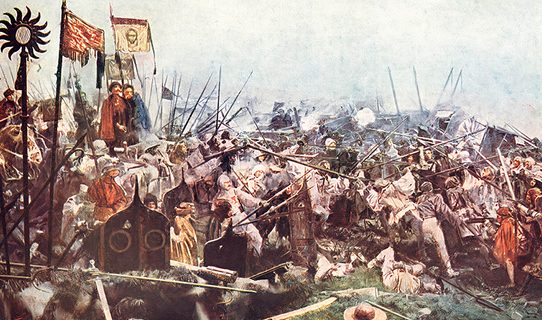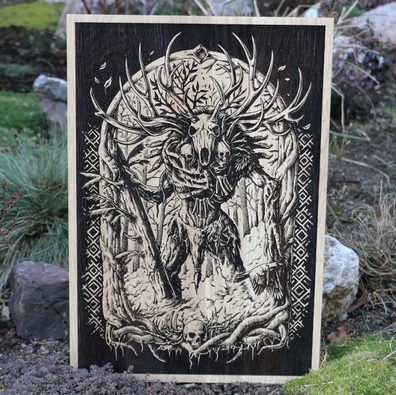-
Catalogue of products
-
- Sale
-
Silver jewellery
-
All in the category Silver jewellery
- Pendants
- Bracelets
- Rings
- Earrings
- Moldavites, czech
- Necklaces
- Golden jewellery
- Torcs - necklaces
- Amber jewelry
- Jewellery sets
- Brooches and buckles
- Silver and stones, jewels
-
Thematic jewelry collections
-
 All in the category Thematic jewelry collections
All in the category Thematic jewelry collections
- Lapponia jewellry
- VIKINGS - bracelets
- Art nouveau jewelry
- Dinosaur pendants
- Mythology collection, ancient cultures
- Nautical silver jewelry
- Filigree and granulated replica jewels
- Garnet jewelry - czech made
- Mystica silver collection - pendants
- Mystica silver collection - earrings
- Mystica collection - silver necklaces
- Historical jewelry
- Zodiac, silver pendants
- Viking jewelry
- Pendants - Historia
-
-
-
Jewellery - bronze, zinc
-
All in the category Jewellery - bronze, zinc
- Amulets and talismans
- Bronze and brass replicas - jewellery
- Gilded jewelry
- Cords, boxes, chains
- Forged jewelry, torcs, bracelets
- Costume jewellery
- Keychains
- Fantasy jewels
- Crowns and tiaras
- Bronze historical jewels
- Chakra, reiki
- Celtic brass jewels, import from Ireland
- Badges, historic jewels
- Scottish clan badges
- Original celtic jewelry
-
-
Replicas - Swords, Axes, Knives
-
All in the category Replicas - Swords, Axes, Knives
- Sharp Blades - throwing knives
- Swords
- Axes, poleweapons
- Daggers
- Knives
- FakeSteel armory
- Maces, war hammers
- Saex knives, scramasax
- Lances, spears
- Archery
- Damascus steel knives
- Falchions and Lange Messers
- Swiss army knives
- HMB - swords, falchions, axes, weapons
- Firearms, cannons
- Viking knives
- Hunting hangers
- Pillow Fight Warriors
- Knives - accessories, sharpeners
- Kitchen knives
-
-
Armour Helmets, Shields
-
T-shirts, Boots
-
Ceramics, Glass
-
Leather Products
-
All in the category Leather Products
- Belts
- Bags, sporrans
- Belt accessories
- Hair clips, accessories, jewellery
- Wallets
- Wristbands
- Leather stamps
- Leather material, furs
- Custom made belts
- Leather masks
- Bottles, hip flasks
- Keychains, whips, other
- Leather care, dyes and stains
- Historical shoemaking
- Leathercraft tools
- Riding shop - horse saddles
- Falconry
- Furs, Reindeer Skins
-
-
Horn Products
-
Smithy Works, Coins
-
Bushcraft, Living History, Crafts
-
All in the category Bushcraft, Living History, Crafts
- Bushcraft
- Forged carving chisels
- Kuksa - Finnish dishes
- Leather, furs, skins, pergamens
- Europe
- Drugstore
- Historical glass beads, replica
- Rocailles Czech glass beads
- Deer antler products
- Craftsman tools, acessory
- Prehistoric ages
- Native americans
- Old Slavs
-
-
 Coins
Coins
-
Shoes, Costumes
-
Drums, Flutes
-
Historical Board Games
-
Pagan decorations
-
All in the category Pagan decorations
- Figures, lamps, cups
- Vánoční ozdoby
- Boxes, pencil cases
- Mugs, goblets, scarves
- Dragons
- Antler furniture, lamps
- Animal figures
- Historical miniatures
- Wall plaques, clock
- Pictures
- Products from antler, wood
- Exterior decorations
- Scrolls, posters, puzzle
- Tin figures, goblets
-
-
Woolen products, Ireland
-
 Wood
Wood
-
 Wargaming
Wargaming
-
Licensed Merch - films, games
-
All in the category Licensed Merch - films, games
- Warhammer 40K
- 2001 Space Odyssey
- AC/DC
- Alien
- Antman
- Assassin's Creed
- Asterix
- Avatar
- Avengers - Infinity War
- Back to the Future
- Batman
- Beetlejuice
- Big Bang Theory
- Blade Runner
- Bud Spencer - Terence Hill
- CBGBs
- Clockwork Orange
- Deadpool
- Deep Purple
- E.T. the Extra-Terrestrial
- Frank Zappa
- FULL METAL JACKET
- GAME OF THRONES
- Ghostbusters
- Godfather
- Gremlins
- GUARDIANS OF THE GALAXY
- HAN SOLO MOVIE
- Harry Potter
- Iron Maiden
- IT
- Jaws
- James Bond 007
- Jurassic Park
- King Kong
- Knight Rider
- KISS
- Led Zeppelin
- LOONEY TUNES
- LORD OF THE RING
- Magic the Gathering
- Marvel
- VIKINGS
- Metallica
- Metro Exodus
- Mortal Kombat
- Mr Pickles
- NASA
- Nirvana
- Peaky Blinders
- Pearl Jam
- Pink Floyd
- Planet of the Apes - Planeta opic
- Pokémon
- Predator
- Queen
- Rambo
- Rick and Morty
- Robocop
- Spiderman
- Star Wars
- Suicide Squad
- Superman
- Teenage Mutant Ninja Turtles - Želvy ninja
- The Doors
- The Witcher
- Thor Ragnarok
- Vikings
- World of Warcraft
- Rocky
- Terminator
- Dračí Hlídka
-
-
 Magic
Magic
-
Books, Maps, Stickers
-
Historical Tents
-
Sculptures, Garden Decor
-
 Mead, Honey
Mead, Honey
-
 Moldavites, minerals, fossils
Moldavites, minerals, fossils
-
Cosmetics
-
Archeology, Geology
-
Interior design
-
 Yule decorations, Glass Beads
Yule decorations, Glass Beads
-
Aromatherapy
-
FILM and props
-
 Outdoor - Bushcraft
Outdoor - Bushcraft
- Naav
- Arma Epona
- WHOLESALE lots
- Gift Certificates
- SPECIAL OFFER, discounts
-
- Log in
- Create an account
- Wholesale
- Contact us
- Country (English)
- Currency ($ - USD)


Nothing was added in your basket.
- Blog
- Middle Ages
- Hussites
Hussites

Hussites
The origins of the Hussite movement in the Kingdom of Bohemia began to emerge after 1390 as a result of a combination of several long-term phenomena. The generally negative mood of the population was also strengthened by several plague epidemics, a less favourable climate influenced by the so-called Little Ice Age, and the increase in the activities of robber off-duty mercenary companies after the end of the so-called Margrave Wars (1381-1405). The decline in the authority of King Wenceslas IV, who was temporarily captured by the league of bohemian lords in 1393, only caused further concern.
The Church, which at that time was a wealthy and powerful organization, gradually drifted away from the proclaimed ideals in the eyes of the faithful common people. This was due to the clergy's penchant for luxury, the tendency to accumulate prebendas, the extortion of fees for various ecclesiastical acts against secular society, and the licentious lives of some priests who even maintained concubines. The situation went worse also due to the papal schism by electing two popes at once (from 1378) and then three popes at once (from 1409). Meanwhile, at Charles University in Prague, there had been discussions since 1385 about the ideas of the recently deceased English theologian John Wycliffe, who opposed the wealth and secular rule of the Church and regarded the Bible as the supreme authority.
Preachers who came from the university milieu and who accepted these ideas (Jan Hus, Jakoubek of Stříbro, Jerome of Prague) began to spread them to other towns and the countryside through their sermons. The preachers wanted only to correct the Church, not to radically change the social order. However, the Church, which considered Wycliffe's ideas heretical, proclaimed an anathema against Jan Hus in 1412 and while he was in Prague, Church declared an interdict - a temporary ban of all religious rites in Prague.
Jan Hus was eventually summoned to a church council in Constance. Master John was expecting a disputation about his pro-Wycliffe ideas, but he was put on trial instead. Emperor Sigismund, who considered John Hus and his ideas like a possible alternative in dealing with the reform of the Church, sacrificed him rather than risk the dissolution of the Council. The trial of Jan Hus culminated in his burning on July 6, 1415. Less than a year later, on April 30, 1416, preacher Jerome of Prague, who went to Constance too, ended the same way. However, the ideas of Jan Hus did not disappear, but on the contrary continued to spread out. At the end of 1415, the Council of Constance received the so-called letter of complaint against the burning of the master Jan Hus sent in form of eight physical letters, to which several hundred Bohemian and Moravian noblemen affixed their seals.
At this time, the chalice gradually became one of the main symbols of Huss's ideas in connection with receiving the wine from communion cup during the Holy Communion rite by all the people (not just by priests like for Catholics), and at the same time two main groups of Hussites began to form - the radicals and the moderates.
King Wenceslas IV tried to stabilise the situation by replacing the New Town councillors and arresting some Hussites. The crowd led by radical preacher Jan Želivský demanded release of the prisoners in front of the town hall on 30 July 1419, but the town councillors did not comply - an attack on the town hall outbrouke soon afterwards (apparently with the participation of Jan Žižka) and the first defenestration followed ended up by the death of town councillors. After receiving news about this event, King Václav IV suffered a stroke and died a few days later on August 16 at hunting castle Nový hrádek near Kunratice. Shortly thereafter, the foundations of the Hussite program called the Four Articles of Prague were formed in the Czech university milieu: 1) the free proclamation of the Word of God, 2) Holy Communion of „bread and wine“, 3) the prohibition of secular rule of the priests and 4) the punishment of sins in all states of society. The Hussite Revolution thus opened the period of the Hussite Wars (1419-1435), when the Hussites had to defend their faith and their existence as well against literally everyone - against Catholic Europe abroad and Catholic opposition of their homeland too. However they were not spared the internal conflicts between the radical and moderate factions of Hussites which ended up by the victory of the moderate Hussites at the Battle of Lipany 1434. After the Hussite wars, the Kingdom of Bohemia became literally the „land of two peoples" where Hussites and Catholics lived side by side in coexistence often complicated and fraught with further conflicts.
And what to read next?

Rondel Dagger
When it comes to short sidearms of the late Middle Ages, it…

Kidney dagger – Bollock Dagger
The dagger was, alongside the knife, a basic and usually…

The Witcher
When Polish writer Andrzej Sapkowski finished the first…

Leshy - Slavic forest spirit
Leshy - Slavic forest spirit


